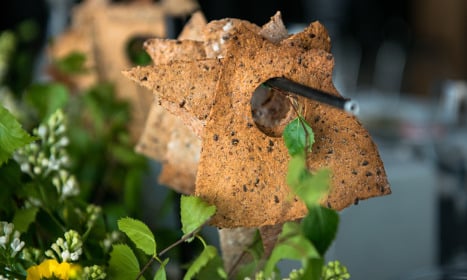FOOD AND DRINK
World gets stronger taste for Swedish sweet treats
Food and drink account for an increasing share of Swedish exports, with France and the US among the countries gobbling up a growing number of cakes, breads and pastries from the Nordic nation.
Published: 15 April 2015 15:08 CEST

Swedish crispbread is selling like hotcakes. Photo: Janus Langhorn/Image Bank Sweden
Swedish food and drink exports grew to a total of 70 billion kronor ($7.9 million) in 2014, according to a new report by Swedish industry body the Food Federation (Livsmedelsföretagen), which predicts that the figure could grow to 150 billion by 2025.
"We are skilled in making products such as milk, margarine, bread, coffee and buns and have a long tradition of producing them. Spirits are the crown jewel of our export industry," the federation's Marie Söderqvist told the TT news agency on Wednesday.
According to Söderqvist, France and the US are the current core customers outside of Scandinavia, with crisp bread, cakes and buns among the best selling exports, alongside alcohol.
"To France, which is a country many associate with croissants and pastries, we are importing a lot of Swedish bread. I think that is quite fascinating. It shows that we can compete even in the most demanding markets," said Söderqvist.
She added that China is the next place where Sweden is hoping to make an impact, although this involves crossing political and bureaucratic hurdles.
"The authorities and politicians must do the first part of the job," she said.
Söderqvist believes that there is also money to be made from increased sales of Swedish pork, peas and Daim cakes, made from fragments of Daim bars, the globally famous Swedish sweet snack that first launched in Stockholm in the 1950s.
She is calling on the Swedish government and other authorities to do more to promote the sale of Swedish produce abroad.
Since the late 1990s, food has doubled its share of total Swedish exports – albeit from a low base – rising from about three percent to just over six percent in 2015.
Url copied to clipboard!


 Please whitelist us to continue reading.
Please whitelist us to continue reading.